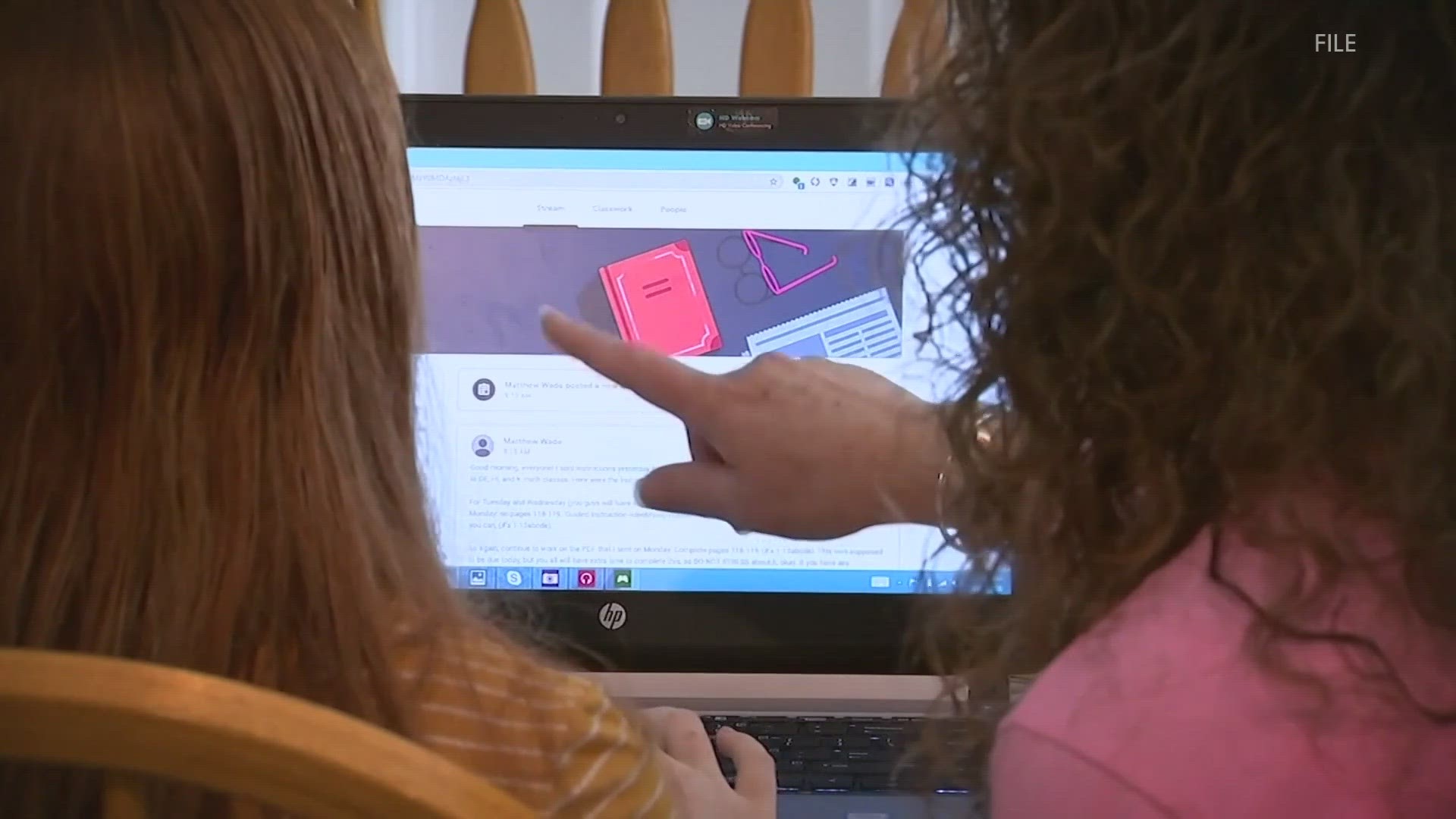ST. LOUIS — Time is running out for schools in the St. Louis area and around the country to spend tens of billions of dollars in federal funds. It's money meant to offset learning loss caused by the COVID-19 pandemic.
At Beasley Elementary School in St. Louis County, you’ll find Julie Werton doing what she loves most.
“I've always wanted to be a teacher ... And show them that math is a positive thing and you can have a lot of fun in math," said Julie Werton, a math interventionist at Beasley.
She helps students like 11-year-old Aleiya Abram catch up after two years of learning in a virtual classroom.
“Especially with like multiplying and stuff like that," Abram said.
She said learning during the pandemic wasn't easy.
“Sometimes you would disconnect with the teacher or … you couldn't get into the thing on time, so they would tardy you," she said. "The internet wouldn't work or you couldn't hear them properly or the microphones would mess up.”
“That must have been frustrating," 5 On Your Side Senior Investigative Reporter Paula Vasan said.
“It was frustrating," Abram said.
So Werton is now one of 34 new instructors, also called “interventionists,” spread out among 19 schools in the Mehlville School District. And it’s thanks to $14 million in federal funding the district has gotten to offset learning loss caused by COVID-19.
“Do you feel like the COVID learning loss is now wiped out?” Vasan asked.
“It is not wiped out," Werton said. "We still have a lot of work to do."
Students here fell up to two grades behind in math and a full grade behind in reading following the pandemic. District officials said they’ve since cut that loss in half by spending the vast majority of their federal funding for more teachers, tutoring and after-school programs.
A December 2022 report from the U.S. Department of Education “strongly discourages” schools from spending COVID-19 relief money on new construction, with initiatives like renovations and remodeling.
When asked whether the millions of dollars in federal funding is enough to close the gap, Werton expressed concern.
“At this point, I don't think it's enough," she said. "I think we need to continue providing the money and the resources for our students to learn."
In all, schools in Missouri are getting $3 billion, largely to help students catch up. Schools have until September to spend the next round of funds and so far, local school districts are about 90% of the way there. They have to spend the final amount by September 2024, when the funding expires.
So far, Missouri schools have divvied out about 40% of those funds, with about a billion dollars left to spend, according to FutureEd, a Georgetown University-based think tank, and data from the Missouri Department of Elementary and Secondary Education, as of April 27.
We wanted to know whether an extension of COVID-19 relief funds for schools may be possible. The Missouri Department of Elementary and Secondary Education told us it works with districts that have approved reasons to request an extension. The state department then facilitates the extension request with the U.S. Department of Education.
Beasley Elementary School Principal Andrea Deane said spending the money in time won’t be a problem because the need is so great.
“How do you feel about the fact that this funding has a three-year limit?” Vasan asked.
“That's a challenge," Deane said. “What's going to happen after next year? It's a little bit scary.”
More than half of her students live at or below the poverty line.
“If you had more poverty in your school district, you receive proportionally a larger amount," said Chris Neale, assistant commissioner with the Missouri Department of Elementary and Secondary Education. “You tend to see greater need, greater cost among students who are economically disadvantaged. That's the whole reason we have a federal interest in education is to help level the playing field.”
For students like Abram, it’s a race to catch up. And for teachers like Werton, it’s pressure to make up for lost time before time runs out.
“I think we need to continue providing the money and the resources for our students to learn," Werton said.
Many educators are worried about the federal funding coming to an end, saying these financial resources have been desperately needed. Their big challenge now is how to make the best use of these one-time funds knowing they won’t last forever.
Want to get in touch with Paula Vasan? Email her directly at paula@ksdk.com.
To watch 5 On Your Side broadcasts or reports 24/7, 5 On Your Side is always streaming on 5+. Download for free on Roku or Amazon Fire TV.

